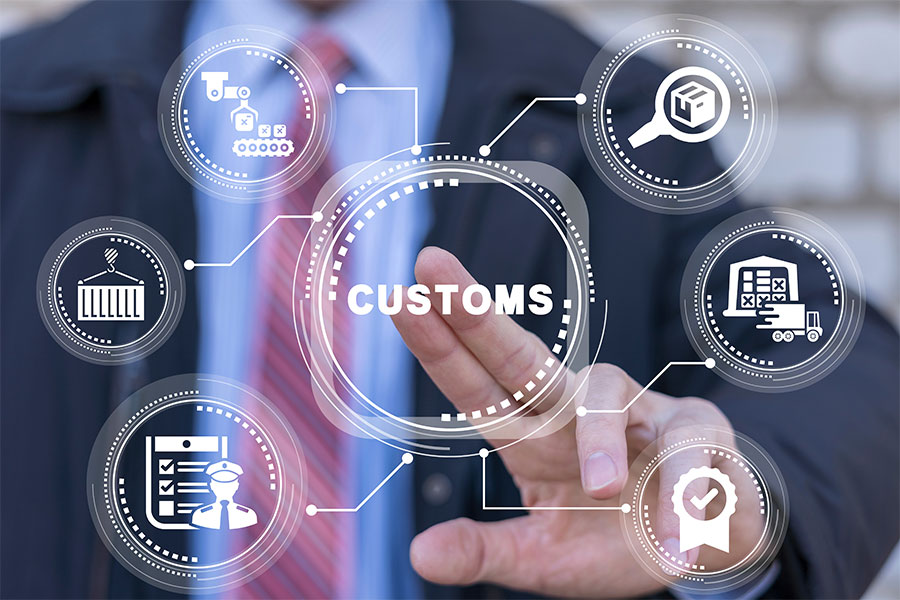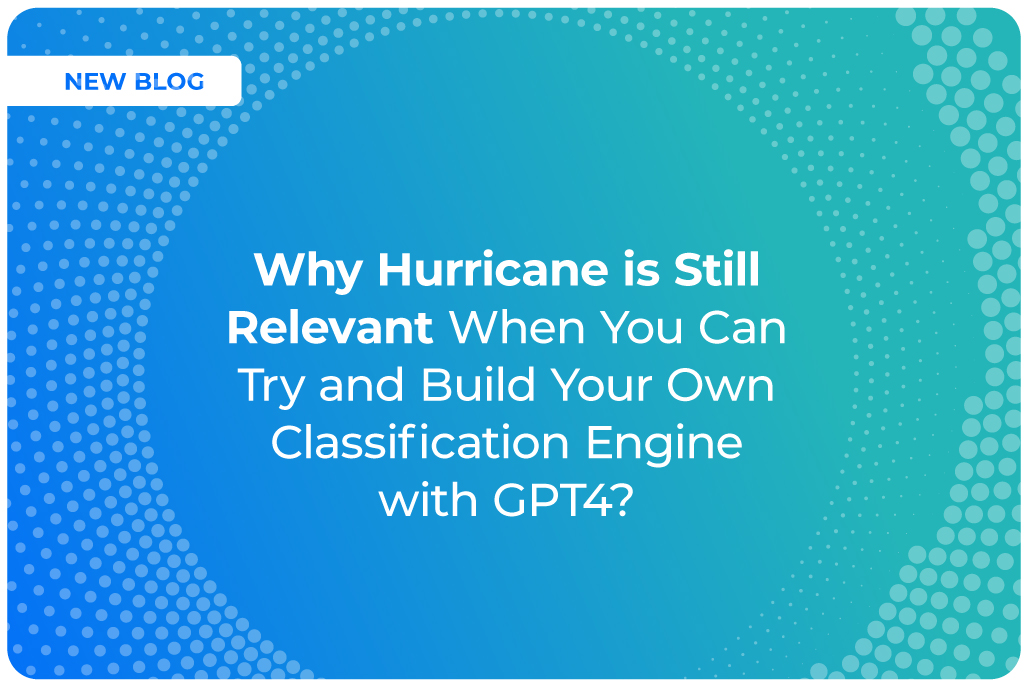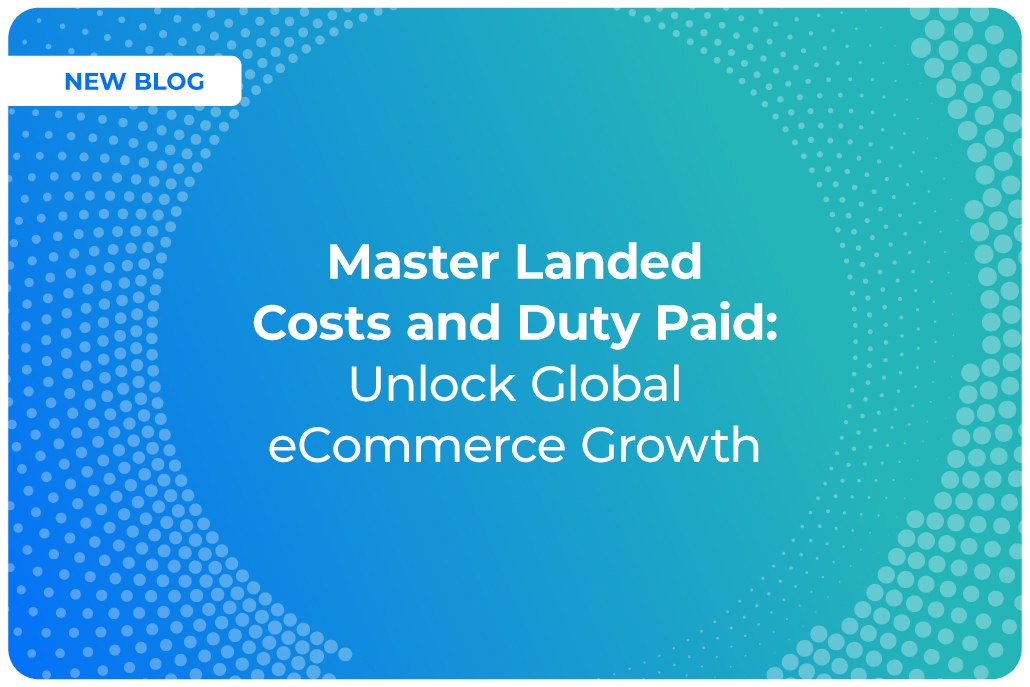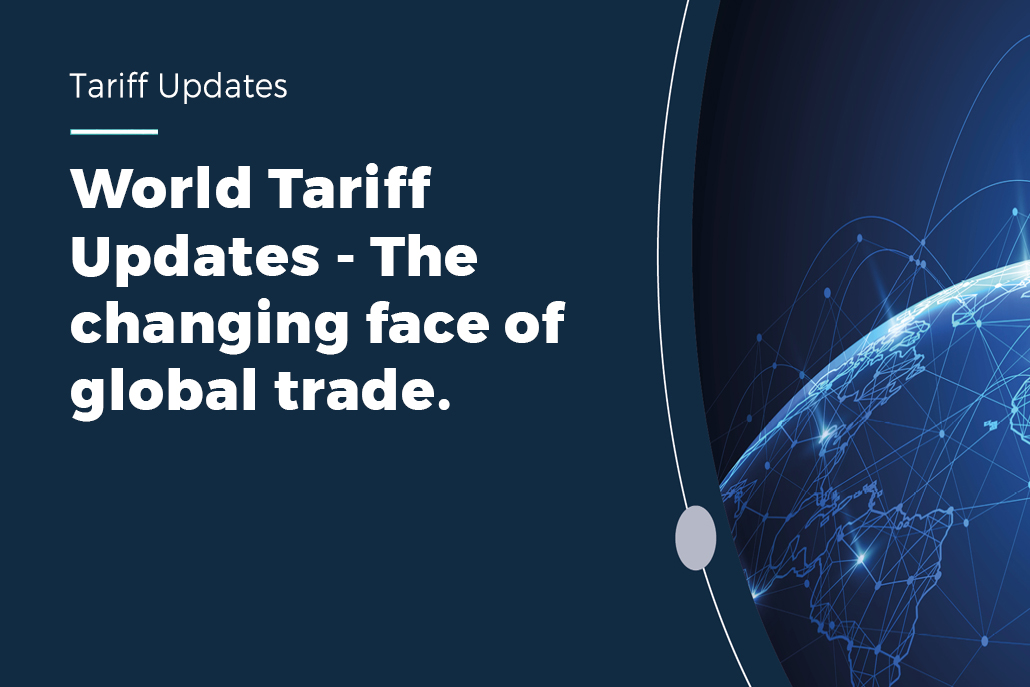Cross-border business is booming. Moving goods between countries can be challenging at the best of times, but in a post-Brexit world, it’s potentially headache-inducing.
You need to consider everything from the paperwork to the costs, and ever-changing regulations make the customs clearance process even more complicated. Complete, accurate and timely data is more important than ever.
We’ve created this guide to help busy retailers like you navigate the bureaucratic maze of EU customs declarations and clearance. We’ll cover recent developments, such as the Import One Stop Shop (IOSS) and the Import Control System 2 (ICS2), which have been game changers. Our knowledge and advice will help you create a smooth and consistent customs clearance process for your goods.
Shipping to and from EU countries
The popularity of online shopping has created a surge in shipping to and from the European Union. In 2022, 75% of Internet users ordered goods or services for private use – an increase of 20% since 2012. McKinsey estimates that cross-border e-commerce could soar from $300 billion in 2020 to $1 trillion by 2030.
But despite the high numbers, we aren’t necessarily talking about happy shoppers. More shipments mean more items to go missing or get held in bureaucratic purgatory.
Millions of shipments go through EU customs borders every day. Each of these 27 countries has its own requirements while also contending with frequent new EU laws covering everything from the safety and security of products to illicit goods.
EU customs officials have never been busier and today rely heavily on automated risk assessment tools and customs clearance systems. Incomplete, inaccurate or late data creates time-consuming delays and additional workload.
If data and paperwork lacks clarity, they’ll block the shipment.
What is required for customs clearance?
The customs clearance process ensures all goods comply with EU and national regulations. Depending upon the value of the commodity, either the retailers or the importer will be required to pay duties and other taxes such as anti-dumping and VAT. You also need to submit any paperwork, including certificates and licences.
You must declare all goods, including low-value items. The Low-Value Item Exemption for VAT was abolished in 2021 so now retailers must determine the VAT rates of specific goods for all EU destinations.
You’ll need specific country commodity codes to classify the product type and where it’s going. All documents need to include the HS code (Harmonised System) to identify products and apply relevant taxes and duties.
The HS is a global standardised method of classifying products for trade. Various classifications and commodities have their own, unique six-digit code associated, so custom authorities around the world can identify the products being imported and exported.
How long should customs clearance take?
The customs clearance process in all EU countries is computerised and the initial import submissions are all data based. If your data is complete, accurate and on time, clearance is usual received in less than one hour. However, if your data is incorrect, incomplete or late, you could be looking at days or even weeks of delays.
Common customs-related challenges for retailers
Regulatory customs compliance is a major challenge for retailers – just not in the way you might expect. Forget about blaming outdated red tape and procedures for delays in the customs clearance process; this misconception couldn’t be further from the truth.
Most EU customs authorities are lean, mean clearance-processing machines with the ability to clear shipments in minutes. They operate sophisticated, automated customs software that relies on data provided by the exporter or importer. Delays are usually due to human error, such as incomplete or incorrect data.
Data is the key to smooth customs clearance. But what does good data look like?
Firstly, data needs to be obvious with no room for uncertainty. Describe the items and their intended use as accurately and clearly as possible. For example, you may know that ‘flamingo dress’, ‘peach top’ and ‘reindeer pyjamas’ refer to clothes, but the customs algorithm will also pick up on any food or animal-related words.
Your goods will be put on hold for further inspection and possible examination, or until the description is modified, potentially depriving a child of their festive present. If you don’t want to ruin Christmas for a young reindeer fan, it would be better to state what the product is made of + intended use, such as ‘100% cotton sleepwear for children’.
Missing data is just as confusing as inaccurate data. Don’t expect the logistics provider to fill or check these elements (they won’t). Your customs clearance broker cannot submit a declaration or clearance to customs with missing data, and the automated clearance system will instantly reject it.
The consequences of poor data quality include:
- Lengthy customs delays
- Additional costs
- Refusals – resulting in a negative customer experience
- Returns – incurring a cost for the item to be sent back to the country it was shipped from
- Time-consuming inspections
- Possible destruction of the goods
- Overpayment – this could be up to 30% extra in customs duties and taxes due to misclassification or inaccurate declaration of goods
Using customs software for accurate data
Exponential growth in e-commerce cross-border trade calls for an automated approach. While it might not be time to call in the robots just yet, customs declaration service software will save you time, hassle and money.
Customs clearance software generates and manages essential shipping documents, such as commercial invoices, packing lists, transport documents and customs declarations.
Up-to-date databases can determine the correct classification of goods based on the World Customs Organisation’s (WCO) Harmonised System (HS). It also enables the correct calculation of applicable duties and taxes based on the product category, origin and other relevant factors.
Besides following ever-changing and complex EU regulations, specialist logistics software often integrates with customs authorities’ systems. This can flag any discrepancies and allow for seamless data exchange. And anything that reduces paperwork, minimises errors and speeds up the customs clearance process sounds good to us!
We recently partnered with logistics expert Pro Carrier and customs management platform AEB SE to bolster cross-border shipping. The collaboration has improved customs data automation and dramatically reduced hold rates from 38% to under 0.5%.
Integrated solutions like our partnership with Pro Carrier and AEB SE reduce unexpected logistics and customs costs. It offers greater assurance for the retailer (and customer) that items will arrive as expected.
From HS lookups and product classification to duty calculations, automated software allows you to verify data in seconds.
What is IOSS?
Implemented in July 2021, the EU’s Import One Stop Shop (IOSS) has put retailer data under greater scrutiny and made the retailer responsible for the payment of relevant VAT amounts. All goods under €150 sent to Europe are now subject to the local rate of VAT in the receiver’s country. It makes declaring and paying VAT easier and more efficient for both the seller and the buyer.
You can register for a unique number that allows you to pay a monthly VAT return on all goods sent to different EU countries. The IOSS number speeds up the customs clearance process and reduces admin. It also ensures your customers only pay VAT once – at the time of purchase – therefore avoiding any extra fees on delivery.
IOSS registration is optional, but once you’re on the system, you have to sell to all your EU customers using the portal.
What is the ICS2 requirement?
The Import Control System 2 (ICS2) is an updated customs electronic import system implemented to manage the safety of air cargo entering Europe. Following the second release of ICS2 in March 2023, sellers must provide data on all goods entering (and transiting) the EU, Switzerland and Norway before loading cargo onto aircraft.
The days of vague goods descriptions are over.
No more ‘parts’, ‘brush’ or ‘garment’ – it’s time to get specific. Try ‘stainless steel door hinge’, ‘oval bamboo hairbrush’ and ‘woman’s satin blouse’ instead.
A previous ICS2 release in March 2021 regulated advance data for air express carriers and postal operators. A third ICS2 release scheduled for March 2024 will cover roads, railways and waterways.
What does a retailer need to prepare in advance of shipping to the EU?
Before you ship to the EU, you’ll need to prepare two basic shipping documents.
1. A commercial invoice
- Describes the contents and value of the shipment, where it’s going and where it’s come from
2. A waybill (AWB)
- This is only for airfreight shipping and contains details relating to the shipment, route, destination and charges. It’s the freight version of a passport – no waybill, no shipment.
In the commercial invoice, include the date, your company’s name, address and tax number, and fill in the same details about the receiver. Then you need to describe the contents and their value, quantity, weight and country of origin. Don’t forget to include the HS code or codes, as it helps customs declaration service software assess appropriate duties and taxes. You will also need to include the International Commercial (INCO) terms, such as Delivery Duty Paid or Unpaid (DDP or DDU) information.
You’ll also need to fill in the reasons for the shipment (trade, business or personal gift?), the shipping/carrier number (waybill number) and insurance costs. Remember, even though you may be sending a gift, there will still be customs charges to pay.
What is a waybill?
The waybill is also known as an air waybill, dispatch or consignment note, and is only needed for air shipments. It’s basically your freight’s ticket to ride… or fly, or sail! Attached to the exterior of the package, it makes it easy to identify and track your shipment and acts as a contract between you and the carrier. As the sender, you’re responsible for completing and signing the waybill, covering the costs of any mistakes in the document. It includes similar details to the commercial invoice, plus an account number to pay the carrier freight charges.
You’ll need an EORI number if you’re making customs declarations for shipments to EU countries. The ‘Economic Operators Registration and Identification Number’ is a unique identification number that can be requested from the specific country you’re shipping to. Apply for the number at least a week in advance.
Other possible documents you should prepare depend on the shipment contents or country. They include an export or import licence, Certificate of Origin and a Bill of Lading (BOL) to guarantee delivery.
What are the top challenges for retailers after a smooth customs process?
Retailers need to stay on top of their cross-border deliveries. Once they streamline their processes with customs software, they should keep the momentum going as the slightest mishap could dissuade customers from using their services again.
According to Statista, consumer opinion about international e-commerce is already quite sceptical, with 73% of online shoppers believing cross-border returns would be more difficult. A further 69% are put off by the prospect of higher delivery charges, while 66% believe international purchases will arrive later than promised. The only way to convince these people to shop with you is to have great systems in place – and a flawless track record.
Data compliance: The key to smooth customs clearance
You might currently have limited knowledge of cross-border compliance but will be familiar with the problems it can cause. These include:
- Customer churn
- Low lifetime value
- Declining repeat purchase rate
- Additional costs
- Costly discount codes and refunds to compensate for late or non-delivered items.
Like it or not, as the retailer, it’s your responsibility – not the logistic provider’s – to deliver compliant data.
Customs clearance is the cornerstone of international trade, and you shouldn’t let potential regulatory barriers get in the way of business growth. Getting your ducks in a row – or your goods classified – will remove any customs clearance challenges.
Cross-border data software, such as the Hurricane Kona One Call API, offers accurate data in seconds, significantly minimising the risk of overpayment or non-compliance. The tech stays up to speed with regulations and risks, keeping you compliant and keeping your customers happy.
To find out more about our automated customs solutions for retailers get in touch.













